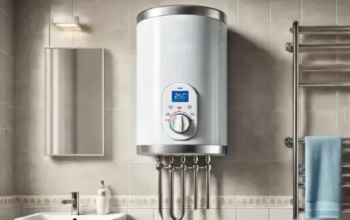Mold remediation is a critical process for eliminating mold growth from homes and ensuring a safe living environment.
It involves well-defined steps to tackle mold issues effectively and prevent future occurrences. Mold can not only damage the structure of home but also poses health risk to those who live in it. It is important to know how mold remediation tackle mold growth.
Here, we will dive into how the experts in mold remediation in NJ achieve in making your home free from mold.
1. Inspection and Assessment
The first and most essential step in the mold remediation process is a thorough inspection of the property. Mold remediation professionals begin by conducting a comprehensive visual inspection to identify visible signs of mold growth, such as black spots on walls, ceilings, and hidden areas like basements or attics. During this phase, they also look for any moisture problems, which are often the root cause of mold proliferation.
Understanding the source of moisture is vital in this initial assessment. Common culprits include leaks from plumbing, condensation, or inadequate ventilation. In some cases, mold testing may be conducted to identify the type of mold present. This is particularly important if toxic mold is suspected, as specific treatment protocols may be required for safe removal.
2. Containment
Once mold is identified, the subsequent step is containment. This process involves establishing barriers to stop mold spores from spreading during remediation.
Professionals usually employ heavy-duty plastic sheeting to isolate affected areas and may implement negative air pressure systems to prevent spores from escaping to other parts of the house. This containment is especially important in larger homes to reduce the risk of cross-contamination.
3. Mold Removal
After containment is established, the professionals proceed with mold removal. This step is critical, as it involves using specialized tools and techniques to eliminate mold safely from various surfaces. Depending on the severity of the infestation, materials such as drywall, carpeting, or insulation may need to be removed and discarded if they are heavily contaminated.
Mold removal requires a careful approach to avoid releasing spores into the air. Professionals are trained to handle this process safely, ensuring that all visible and hidden mold is removed efficiently.
4. Cleaning and Sanitization
Following the removal of mold, cleaning and sanitizing the affected areas is crucial. This step helps eliminate any remaining spores and ensures that surfaces are safe for re-occupancy. Mold remediation experts often use EPA-registered products for cleaning and sanitization, ensuring effective treatment without introducing harmful chemicals into the environment.
Cleaning involves wiping down surfaces, treating fabrics, and potentially using specialized equipment to ensure that all traces of mold are gone.
5. Moisture Control
A significant part of the mold remediation process is addressing the moisture issues that caused the mold growth. Without tackling these underlying problems, mold is likely to return. Professionals may recommend repairs to leaks, improving ventilation, or using dehumidifiers to maintain low humidity levels in affected areas.
By controlling moisture effectively, the chances of future mold growth are significantly reduced, creating a healthier indoor environment.
6. Final Testing
Once remediation is complete, professionals perform clearance testing to confirm that the mold has been effectively removed. This final testing is crucial as it ensures that the affected areas are safe for occupancy. The results provide peace of mind to homeowners, affirming that the remediation process was successful and that their living space is again safe from mold.
Conclusion
Mold remediation services play a vital role in eliminating mold and ensuring a safe living environment. Through thorough inspection, containment, removal, cleaning, moisture control, and final testing, professionals effectively tackle mold growth. By addressing the root causes of mold, these services not only restore homes but also promote healthier indoor conditions for all occupants.




